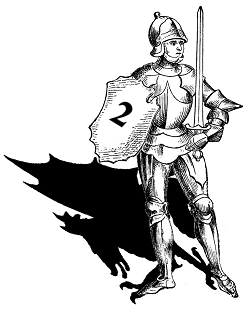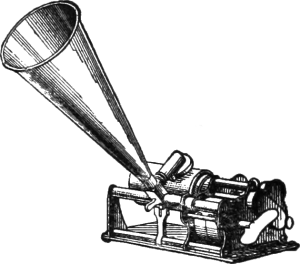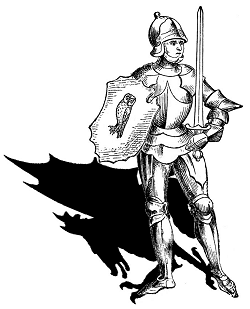 This is the second of four posts about key ideas from my book The Shadow of Consciousness. This one looks at how the brain points at things, and how that could provide a basis for handling intentionality, meaning and relevance.
This is the second of four posts about key ideas from my book The Shadow of Consciousness. This one looks at how the brain points at things, and how that could provide a basis for handling intentionality, meaning and relevance.
Intentionality is the quality of being about things, possessed by our thoughts, desires, beliefs and (clue’s in the name) our intentions. In a slightly different way intentionality is also a property of books, symbols, signs and, pointers. There are many theories out there about how it works; most, in my view, have some appeal, but none looks like the full story.
Several of the existing theories touch on a handy notion of natural meaning proposed by H.P.Grice. Natural meaning is essentially just the noticeable implication of things. Those spots mean measles; those massed dark clouds mean rain. If we regard this kind of ‘meaning’ as the wild, undeveloped form of intentionality we might be able to go on to suggest how the full-blown kind might be built out of it; how we get to non-natural meaning, the kind we generally use to communicate with and the kind most important to consciousness.
My proposal is that we regard natural meaning as a kind of pointing, and that pointing, in turn, is the recognition of a higher-level entity that links the pointer with the target. Seeing dark clouds and feeling raindrops on your head are two parts of the recognisable over-arching entity of a rain-storm. Spots are just part of the larger entity of measles. So our basic ability to deal with meanings is simply a consequence of our ability to recognise things at different levels.
Looking at it that way, it’s easy enough to see how we could build derived intentionality, the sort that words and symbols have; the difference is just that the higher-level entities we need to link everything up are artificial, supplied by convention or shared understanding: the words of a language, the conventions of a map. Clouds and water on my head are linked by the natural phenomenon of rain: the word ‘rain’ and water on my head are linked by the prodigious vocabulary table of the language. We can imagine how such conventions might grow up through something akin to a game of charades; I use a truncated version of a digging gesture to invite my neighbour to help with a hole: he gets it because he recognises that my hand movements could be part of the larger entity of digging. After a while the grunt I usually do at the same time becomes enough to convey the notion of digging.
External communication is useful, but this faculty of recognising wholes for parts and parts for wholes enables me to support more ambitious cognitive processes too, and make a bid for the original (aka ‘intrinsic’) intentionality that characterises my own thoughts, desires and beliefs. I start off with simple behaviour patterns in which recognising an object stimulates the appropriate behaviour; now I can put together much more complex stuff. I recognise an apple; but instead of just eating it, I recognise the higher entity of an apple tree; from there I recognise the long cycle of tree growth, then the early part in which a seed hits the ground; and from there I recognise that the apple in my hand could yield the pips required, which are recognisably part of a planting operation I could undertake myself…
So I am able to respond, not just to immediate stimuli, but to think about future apples that don’t even exist yet and shape my behaviour towards them. Plans that come out of this kind of process can properly be called intentional (I thought about what I was doing) and the fact that they seem to start with my thoughts, not simply with external stimuli, is what justifies our sense of responsibility and free will. In my example there’s still an external apple that starts the chain of thought, but I could have been ruminating for hours and the actions that result might have no simple relationship to any recent external stimulus.
We can move thinks up another notch if I begin, as it were, to grunt internally. From the digging grunt and similar easy starts, I can put together a reasonable kind of language which not only works on my friends, but on me if I silently recognise the digging grunt and use it to pose to myself the concept of excavation.
There’s more. In effect, when I think, I am moving through the forest of hierarchical relationships subserved by recognition. This forest has an interesting property. Although it is disorderly and extremely complex, it automatically arranges things so that things I perceive as connected in any way are indeed linked. This means it serves me as a kind of relevance space, where the things I may need to think about are naturally grouped and linked. This helps explain how the human brain is so good at dealing with the inexhaustible: it naturally (not infallibly) tends to keep the most salient things close.
In the end then, human style thought and human style consciousness (or at any rate the Easy Problem kind) seem to be a large and remarkably effective re-purposing of our basic faculty of recognition. By moving from parts to whole to other parts and then to other wholes, I can move through a conceptual space in a uniquely detached but effective way.
That’s a very compressed version of thoughts that probably need a more gentle introduction, but I hope it makes some sense. On to haecceity!
 Louie Savva kindly invited me to do a couple of podcasts recently which are now accessible on his site. These are part of the ‘Existential Files’ series he and Matthew Smith have been doing on his blog of despair (actually quite cheerful, considering) Everything is Pointless. I understand Susan Blackmore is pencilled in to do one soon, which should be interesting.
Louie Savva kindly invited me to do a couple of podcasts recently which are now accessible on his site. These are part of the ‘Existential Files’ series he and Matthew Smith have been doing on his blog of despair (actually quite cheerful, considering) Everything is Pointless. I understand Susan Blackmore is pencilled in to do one soon, which should be interesting.

